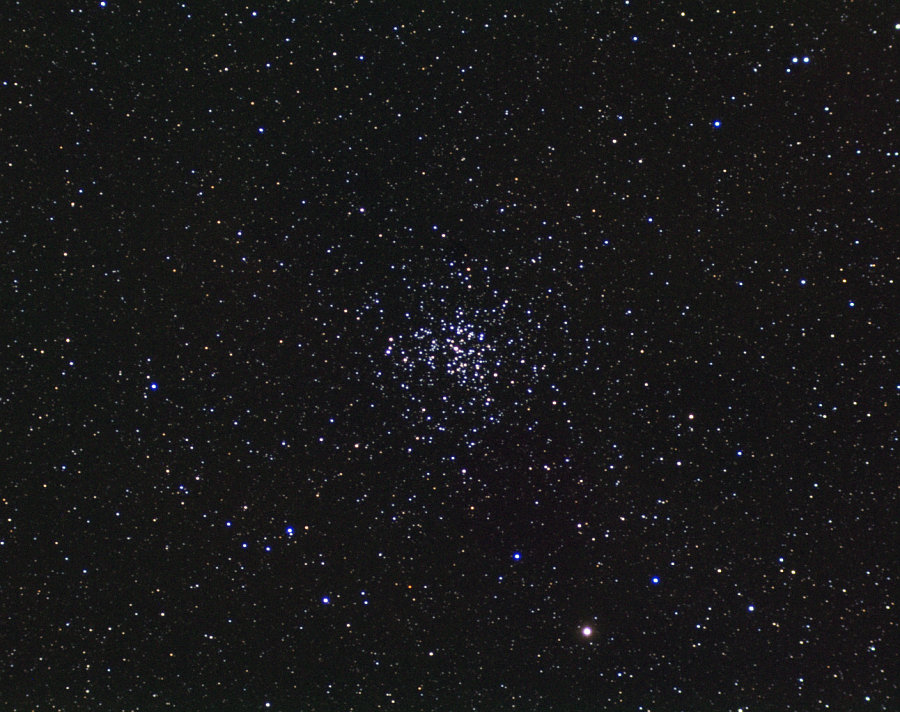So after last nights
ISS adventures, I headed back out with my telescope. It was an absolutely beautiful night out, hardly a cloud in the sky and not a breath of wind.
My objective for the night was Saturn.
Unfortunately, from my garden much of the south-eastern horizon is blocked by a huge hill, houses and trees. It would be a while before I was able to see the planet, so I decided to do some Messier-hunting for a bit. M42 was my first
Messier object, spotted on my
first night out with my scope - it's a fairly obvious one, being visible to the naked eye, and utterly beautiful in a scope. Last night I went for something different.
I took a quick flick through Turn Left at Orion, and pretty much went for the first one I opened. M37, an open cluster located in Auriga. It took almost an hour of lining up, focusing, checking Stellarium and then starting over before I finally spotted it in my eyepiece. It was an incredibly faint fuzzy blob (why they're referred to as 'faint fuzzies', I guess) but the satisfaction of finally finding it was immense! I'm so glad I didn't get a GoTo mount now, I love the chase!
And what was I looking at? Here's an excerpt from
Wikipedia:
'M37 is located in the anti-center direction, opposite from the Galactic Center as seen from Earth. Estimates of its age range from 347 million to 550 million years. It has 1,500 times the mass of the Sun and contains over 500 identified stars, with roughly 150 stars brighter than magnitude12.5.
At its estimated distance of around 4,500 light-years (1,400 parsecs) from Earth, the cluster's angular diameter of 24 arcminutes corresponds to a physical extent of about 20–25 ly (6.1–7.7 pc).'
It's 4,500 light-years away. So the light I was seeing started it's journey 4,500 years ago. And the cluster I was looking at is approximately 25 ly across. That's 250 trillion kilometers. Amazing stuff.
(Note: This is not how it looked in my scope!)
By the time I had recovered from the rush of finding my first real Messier object, Saturn was up! With more than a little excitement, I swung my scope around and lined it up in the finder. I looked first with the 25mm and then with the 10mm ep, and frankly, there are no words to describe the feeling of finally viewing those rings with my own eyes. It was easily the most awe-inspiring thing I've ever seen.
The seeing was perfect, the view pin-sharp and crystal clear. I just stood for a while whispering 'Wow' to myself before running inside and dragging my parents out to look. I called my sister down from her bed too. They were all amazed. I jumped around with excitement, and my sister hugged me. It was a seriously brilliant moment. But it was really cold, so they went back inside pretty quickly...
(Stellarium screenshot - Teeny tiny, but so beautiful)
I stayed out for another 2 hours or so. It was just spectacular. I couldn't quite believe what I was looking at. Saturn. The rings. Two visible moons (Titan and Rhea). It's been nearly 24 hours now, and I'm still struggling to articulate quite how it made me feel. Everyone should see it, at least once.
It's really there!!







